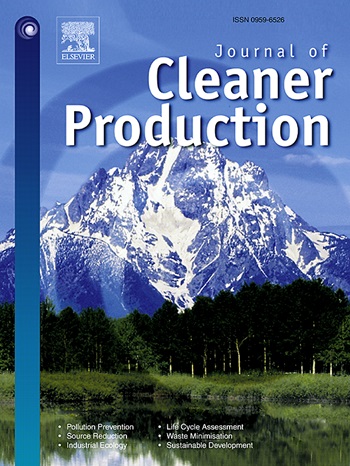氨燃料船舶的生命周期分析
IF 9.7
1区 环境科学与生态学
Q1 ENGINEERING, ENVIRONMENTAL
引用次数: 0
摘要
为了响应国际海事组织(IMO)到2050年左右实现国际航运温室气体净零排放的战略,替代燃料提供了一个可行的选择,评估替代海洋燃料的环境绩效至关重要。由于氨因其零碳含量而成为强有力的竞争者,本文采用生命周期分析(LCA)方法来评估氨作为船用燃料对环境的影响,评估其对全球变暖、酸化、富营养化和光化学臭氧产生的贡献潜力。以一艘多用途干货重型起重船为例,重点分析了两个关键方面:氨燃料和燃料容器,涵盖生产、运输、储存、加油、使用和回收。研究结果强调了与传统化石燃料相比,来自不同生产过程的各种氨燃料在整个生命周期中最大限度地减少对环境的影响方面的优势。结果表明,与蓝氨和绿氨不同,棕色氨——由化石燃料产生,没有碳减排技术——比传统海洋燃料产生更高的生命周期排放释放。此外,该研究还将LCA扩展到各种类型的船舶,以展示氨作为船用燃料的好处以及与之相关的潜力。建议海洋工业将LCA纳入替代燃料评价,促进对其环境影响的全面了解。本文章由计算机程序翻译,如有差异,请以英文原文为准。
Life cycle analysis of ammonia fuelled ship – case ship studies for marine vessels
In response to the International Maritime Organization's (IMO) strategy to achieve net zero greenhouse gas emissions from international shipping by around 2050, alternative fuels present a viable option and it is critical to assess the environmental performance of alternative marine fuels. Since ammonia stands out as a strong contender due to its zero-carbon content, this paper employs a life cycle analysis (LCA) methodology to assess the environmental impacts of ammonia as a marine fuel, assessing its contributing potential on global warming, acidification, eutrophication, and photochemical ozone creation. A case study of a multi-purpose dry-cargo heavy lift vessel is analysed, focusing on two key aspects: ammonia fuel and fuel containment tanks, covering production, transport, storage, bunkering, usage, and recycling. The findings highlight the advantages of various ammonia fuels from different production processes in minimizing environmental impacts across its life cycle compared to traditional fossil fuels. The results indicate that unlike blue and green ammonia, the brown ammonia–produced from fossil fuels without carbon emission reduction techniques–results in higher life cycle emission release than the traditional marine fuels. Additionally, the study extends the LCA to various ship types to showcase ammonia's benefits as a marine fuel and the potential that is associated with. Recommendations are provided for the marine industry on integrating LCA into alternative fuel evaluations, promoting a comprehensive understanding of their environmental impacts.
求助全文
通过发布文献求助,成功后即可免费获取论文全文。
去求助
来源期刊

Journal of Cleaner Production
环境科学-工程:环境
CiteScore
20.40
自引率
9.00%
发文量
4720
审稿时长
111 days
期刊介绍:
The Journal of Cleaner Production is an international, transdisciplinary journal that addresses and discusses theoretical and practical Cleaner Production, Environmental, and Sustainability issues. It aims to help societies become more sustainable by focusing on the concept of 'Cleaner Production', which aims at preventing waste production and increasing efficiencies in energy, water, resources, and human capital use. The journal serves as a platform for corporations, governments, education institutions, regions, and societies to engage in discussions and research related to Cleaner Production, environmental, and sustainability practices.
 求助内容:
求助内容: 应助结果提醒方式:
应助结果提醒方式:


